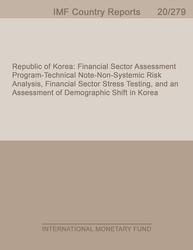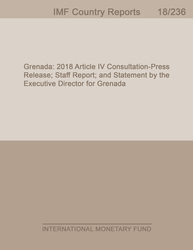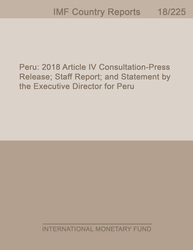
Republic of Korea:Financial Sector Assessment Program-Technical Note-Systemic Risk Analysis, Financial Sector Stress Testing, and an Assessment of Demographic Shift in Korea
Financial Sector Assessment Program-Technical Note-Systemic Risk Analysis, Financial Sector Stress Testing, and an Assessment of Demographic Shift in Korea
READ MORE...
Volume/Issue:
Volume 2020
Issue 279
Publication date: September 2020
ISBN: 9781513557052
$18.00
Add to Cart by clicking price of the language and format you'd like to purchase
Available Languages and Formats
| English |
Prices in red indicate formats that are not yet available but are forthcoming.
Topics covered in this book
This title contains information about the following subjects.
Click on a subject if you would like to see other titles with the same subjects.
Banks and Banking , Finance , ISCR , CR , financial system , sensitivity analysis , balance sheet , banking system , central bank , credit risk , housing market , return on assets , sovereign bond , bond yield , real GDP , market structure , solvency analysis , Insurance , Loans , Stress testing , Commercial banks , Insurance companies , Global
Also of interest
Summary
This note presents the systemic risk analysis conducted for the Republic of Korea in the course of the 2019 Korea FSAP. It comprises a forward-looking solvency analysis for banks, insurers, and pension funds, a liquidity stress test for banks, and an assessment of network and interconnectedness for a wide range of financial sector entities and their ties to the real economy. Various structural characteristics of Korea’s economy and its financial system informed the features and focus for its forward-looking risk analysis. They include Korea’s strong export orientation, limited diversification, and its key role as a node in regional and international supply chains. Korea’s financial system has grown by 40 percentage points of GDP since 2013, enhancing the importance of a deep financial sector analysis as conducted through the FSAP. Mortgage insurance schemes are widely used—which was reflected in the way the risk assessment for banks was conducted. Korea’s life and non-life insurance sector is large, highly concentrated and saturated. Fintech developments keep accelerating, in terms of its Open Banking system and e-money providers. Demographic developments in Korea are among the most adverse world-wide, implying a continuous drag on demand, downward pressure on interest rates, financial firms’ income, and hence their capitalization unless they will be altering their business models.
Copyright © 2010 - 2025
Powered by:
AIDC



